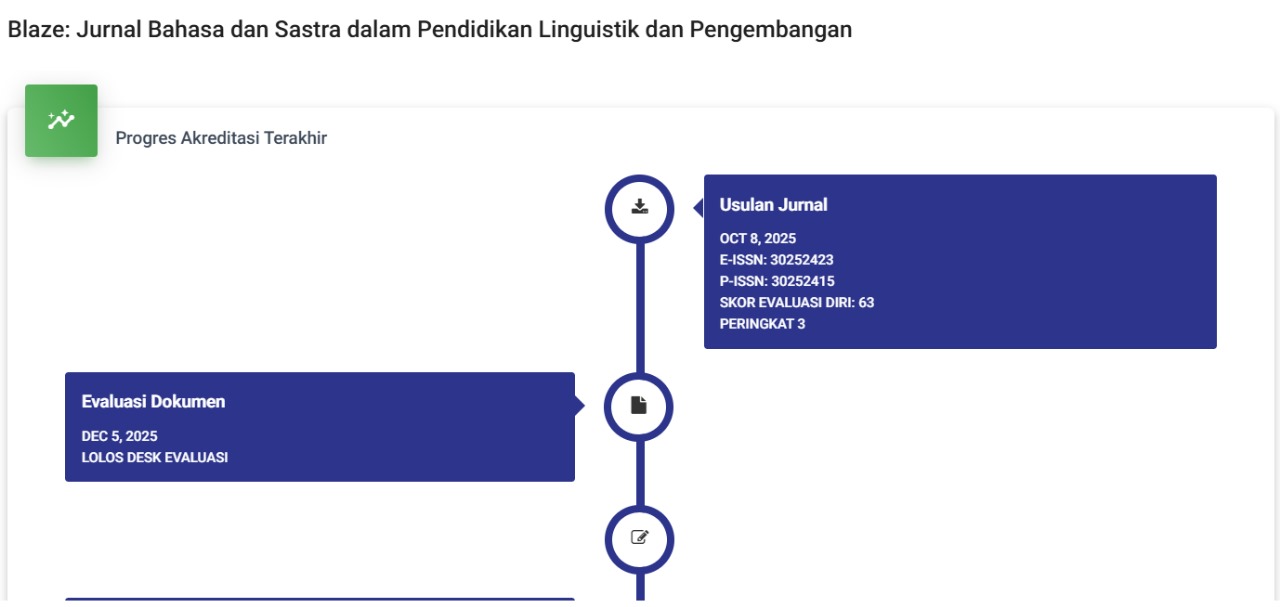Analysis Of Figurative Language In Three Poems By Robert Frost
DOI:
https://doi.org/10.59841/blaze.v2i3.1512Keywords:
Robert Frost, Figurative Language, Poetry Analysis, Personification (dominant), Metaphor, Symbol, HyperboleAbstract
This research examines how Robert Frost uses metaphorical language in three of his well-known poems: "The Road Not Taken," "My November Guest," and "Stopping by Woods on a Snowy Evening." Personification, metaphor, symbol, exaggeration, and repetition are all often used, as the analysis makes clear. Personification is the most common figure of speech among them, lending human characteristics to inanimate things or abstract concepts in each of the three poems. This technique enhances the emotional impact of the poems and allows readers to connect more deeply with the themes and settings. The analysis of each poem explores how specific figures of speech contribute to the overall meaning. In "The Road Not Taken," metaphor and personification are used to explore the impact of life choices. "My November Guest" relies heavily on personification to portray melancholy and the beauty of autumn. "Stopping by Woods on a Snowy Evening" uses personification, hyperbole, symbol, and repetition to create a sense of isolation and reflection amidst natural beauty. Ultimately, Frost's masterful use of figurative language elevates the meaning of these poems, allowing readers to explore deeper interpretations beyond the literal text. This exemplifies his skill as a poet who effectively conveys the complexities of human experience and the natural world.
References
Arp, J. J. (2010). Literature: A World of Words. McGraw-Hill.
Arp, T. R. (2012). Perrine‟s Sound and Sense: an introduction topoetry. Boson.
Chandler, H. K. (2007). Elements of Style. Wadsworth Cengage Learning.
Dewangkari, & Endah. (2002). An Analysis On Figurative Language UsedIn John Donne’s Poem.
Fahas, R., Husaini, R., S, P. J. L., & R, D. R. (2021). LINGUISTICS ANALYSIS : FIGURATIVE LANGUAGE USED IN ROBERT FROST ’ S POEM. 2.
Keraf, S. (2004). Diksi: Dasar-dasar Pilihan Kata. pustaka jaya.
Keraf, S. (2007). Komunikasi Efektif: Sebuah Pengantar. Pusat Bahasa Universitas Indonesia.
Knickerbocker, E. R., Renninger, M. A. (1963). Classic and Contemporary Readings in American Literature. Harcourt, Brace & World.
Leech, G. (1991). A Linguistic Guide to English Poetry. Longman.
Miller, D., & Currie, K. (2000). English Grammar and Composition. Houghton Mifflin.
Perrine, A. (1969). Sound, and Sense: An Introduction to Poetry.
Riru, & Kusmarlin. (1991). Comparing Robert Frosts’ Poems; Stopping by Woods on a Snowy Evening and The Sound of Trees. 6(4), 56.
Simon, & Schuster. (1988). Webster’s New World College Dictionary.
Siswantoro, D. (2002). Pengantar Semantik Bahasa Indonesia. Universitas Indonesia Press.
Walidain, M. I. (2012). The Use of Figurative Language in Arabic Poetry: A Comparative Study. International Journal of Humanities and Social Science, 2(7), 13–20.
Downloads
Published
How to Cite
Issue
Section
License
Copyright (c) 2024 BLAZE : Jurnal Bahasa dan Sastra dalam Pendidikan Linguistik dan Pengembangan

This work is licensed under a Creative Commons Attribution-ShareAlike 4.0 International License.








